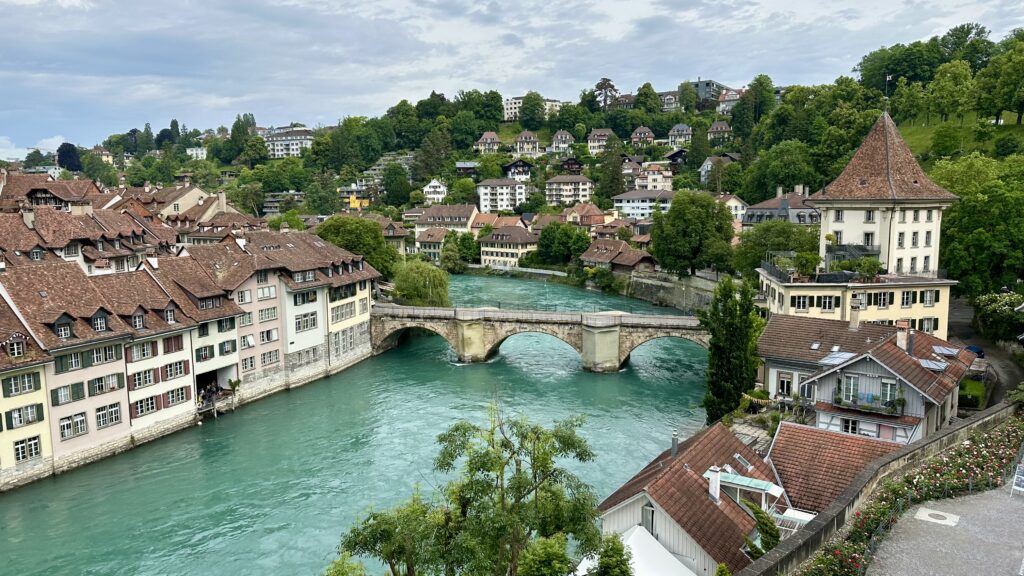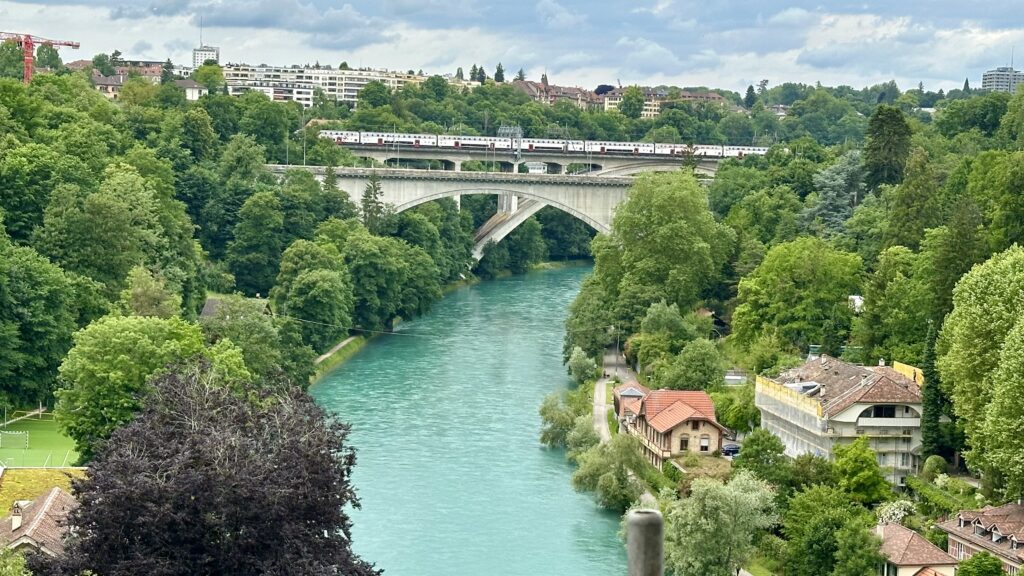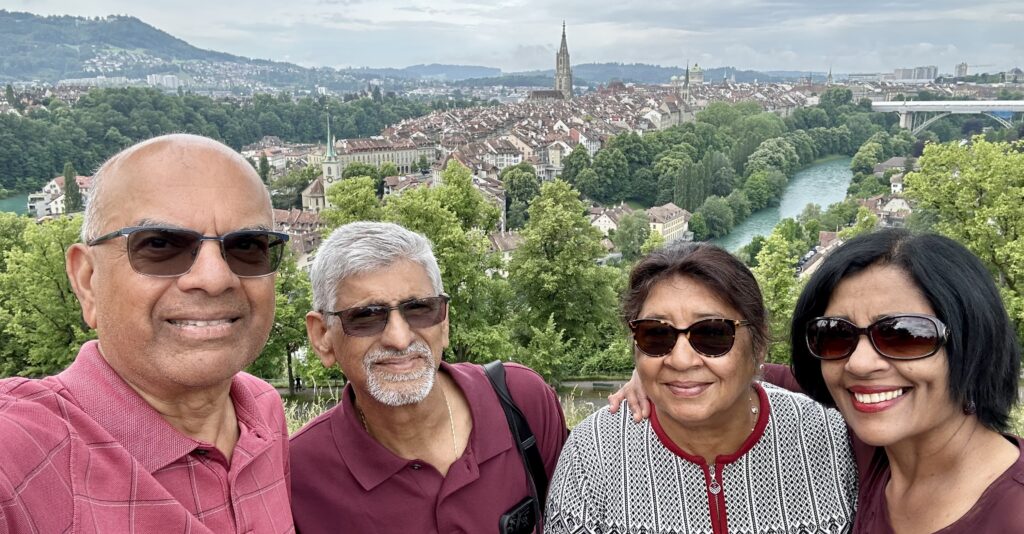Overnight in Prizeotel
Located in the west of Swizerland on River Aare, Bern is Switzerland’s capital city. The old town of Bern has been a UNESCO World Heritage site since 1983. Bern offers a rich array of sightseeing options.
We took a train in the evening from Zurich to Bern, a 1-hour journey. We checked into our hotel which was just a stone’s throw away from Rosengarten(Rose Garden), one of the sites we were planning to visit. The old town was a 10-15 walk from our hotel. The room in our hotel had a modern look and feel.
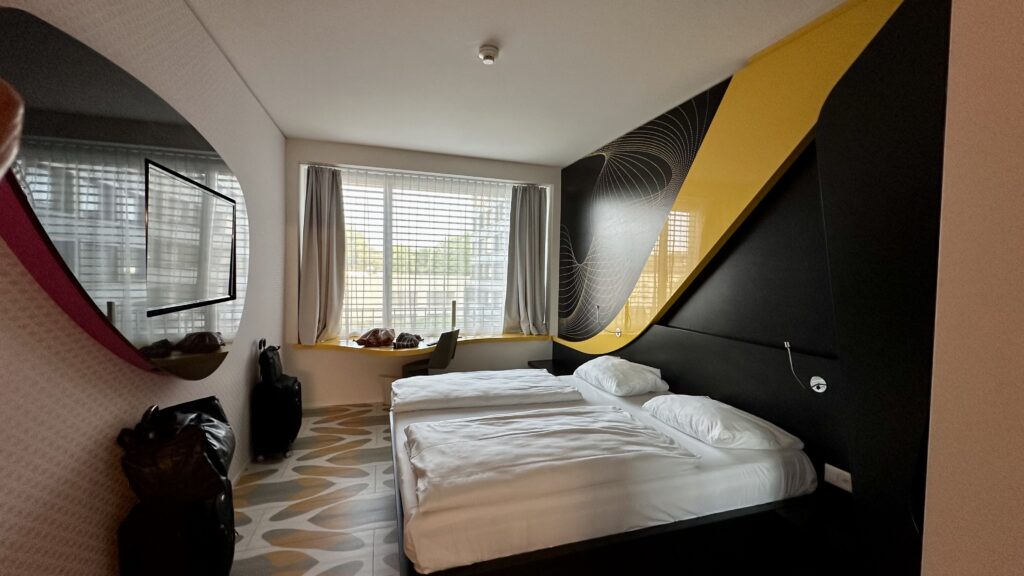
- Rosengarten
- Statue of Einstein
- Bern’s Old Town
- Clock Tower
- Einstein Haus tour
- Berner Münster
- Medieval Fountains
- Kellerläden (Cellar shops)
- Kornhausplatz
- The French Church
- Bundeshaus
- Aare River
Rosengarten – is one of the most peaceful and beautiful places in Bern with impressive views of the city. . The Rose Garden Park (Rosengarten) is a large open area sitting on a hill slope just across the river from the center of town. Originally a cemetery (1765-1877), the area became a public park in 1913. It was redesigned in the late 1950s and now sports more than 200 types of roses and another 200 species of irises, azaleas, and rhododendrons. There is also a large, splendid pond, a pavilion, restaurant, and picnic areas.
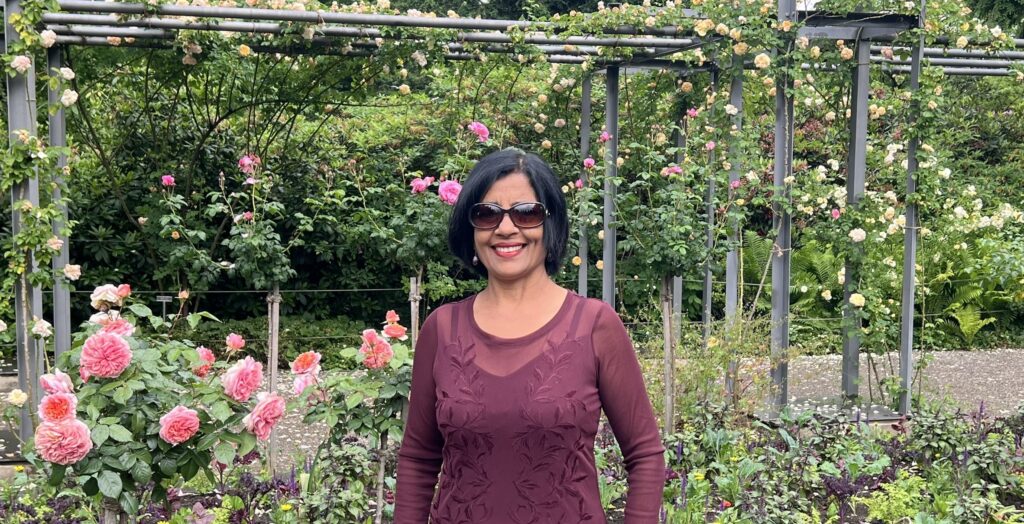
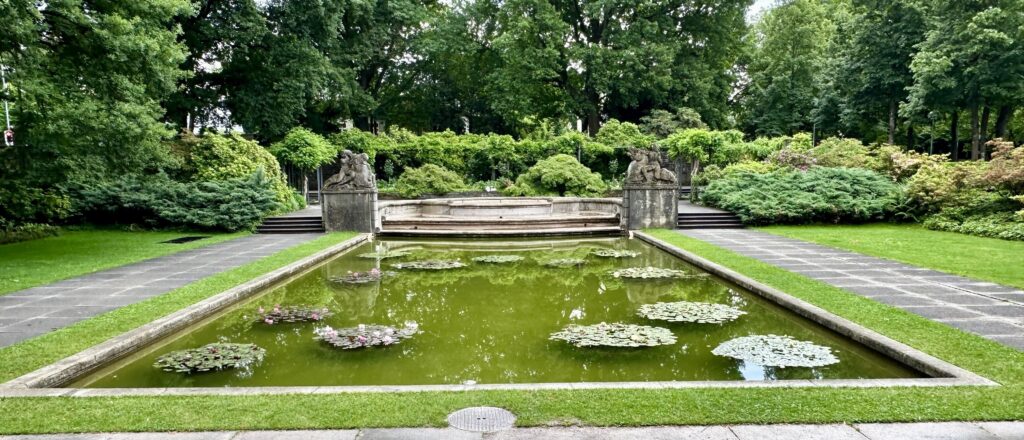
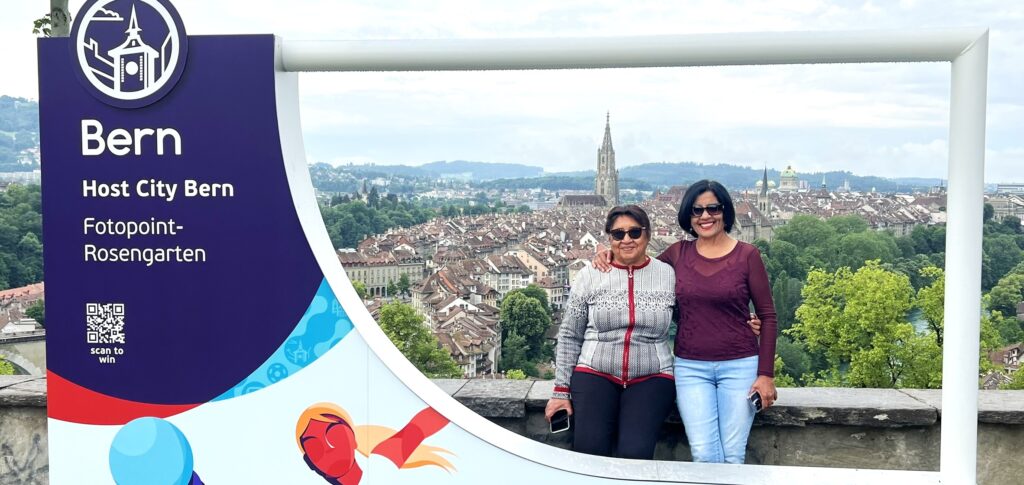
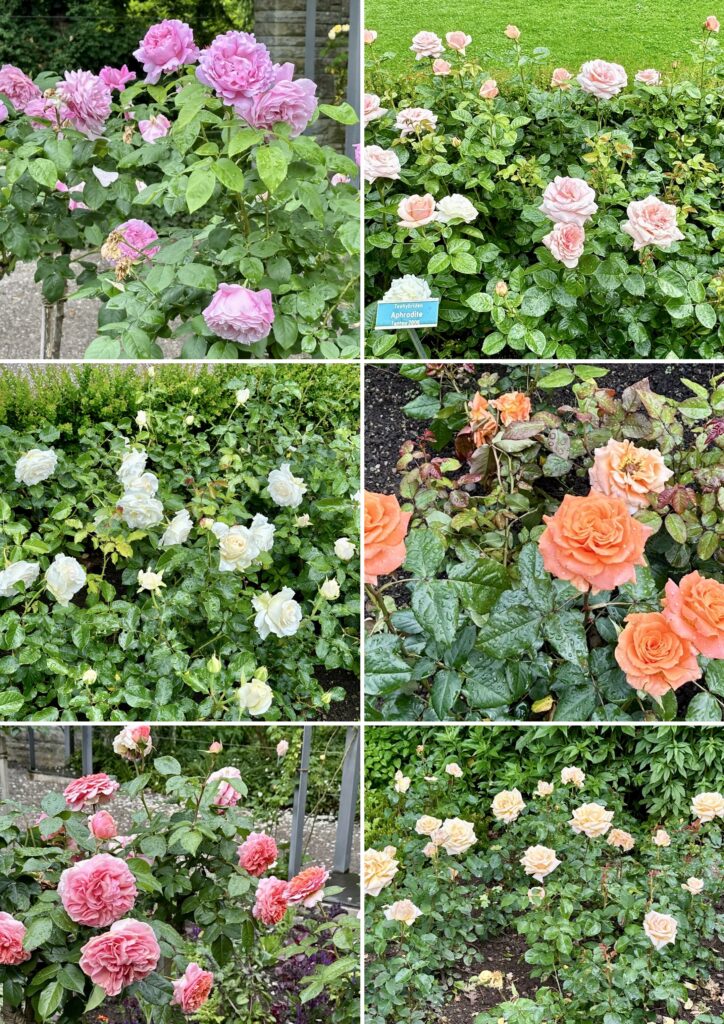
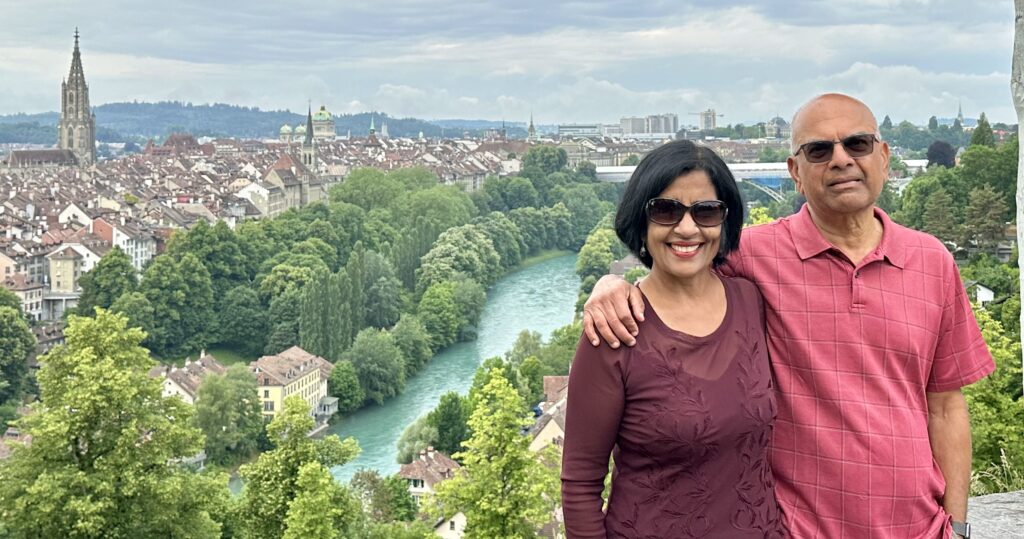
Statue of Einstein – From the Rosengarten, a path leads downhill and across a bridge to the old town. On the way there is a bronze statue of the famous physicist Albert Einstein sitting on a bench. He lived in Bern from 1902 to 1909, where he developed his theory of relativity. There is some space on the bench next to his statue for us to sit and take a picture.
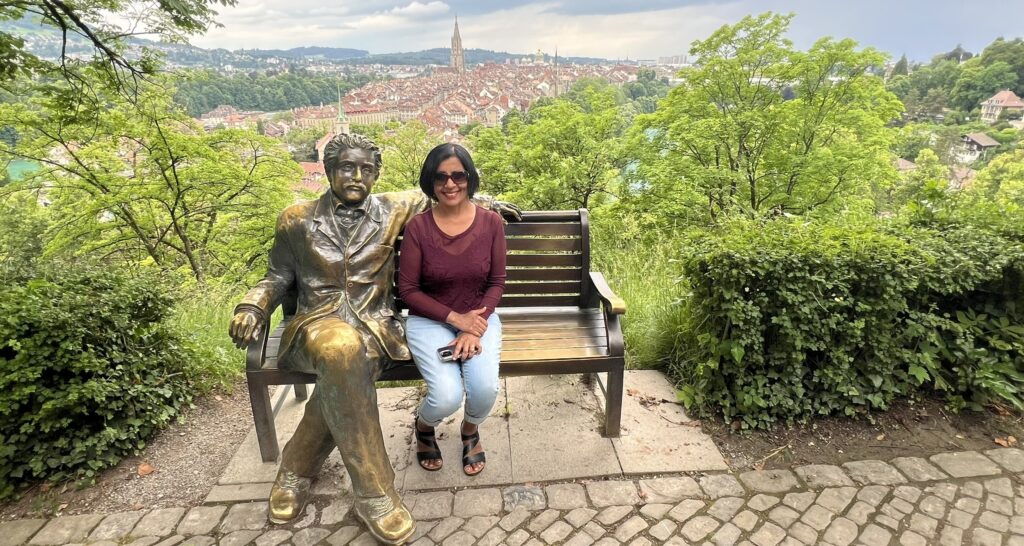
Walking down to Bern’s Old Town – The old town of Bern is a UNESCO World Heritage Site. Situated on a cliff surrounded on three sides by the stunning aquamarine waters of the Aare River, the old town has preserved much of its medieval character. Here is where all the attractions are located, including all of the bridges across the Aare, public fountains, old statues, towers, and the famous Clock Tower.
It was a 10-12 min downhill walk to old city from Rosengarten. On the way you will cross the Nydegg bridge (Nydeggbruke).
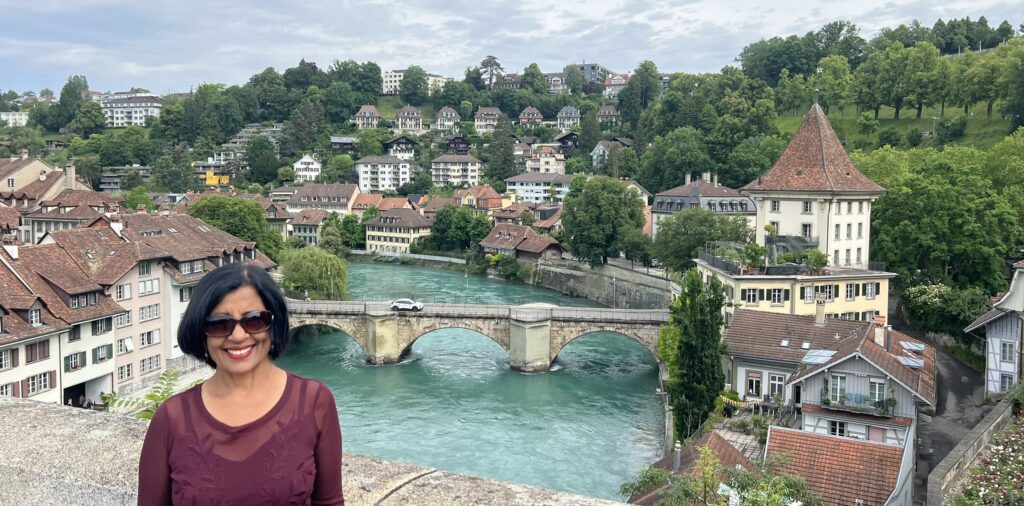
There is also a church on the bridge – Kirchgemeinde Nydegg. It is one of the oldest churches in Bern, built sometime between 1341-1346 as a replacement for a ruined fort. After the Reformation, the church was temporarily converted to a different purpose before being re-sacralized in the 17th century. Today, it also enjoys an outstanding reputation as a concert hall.
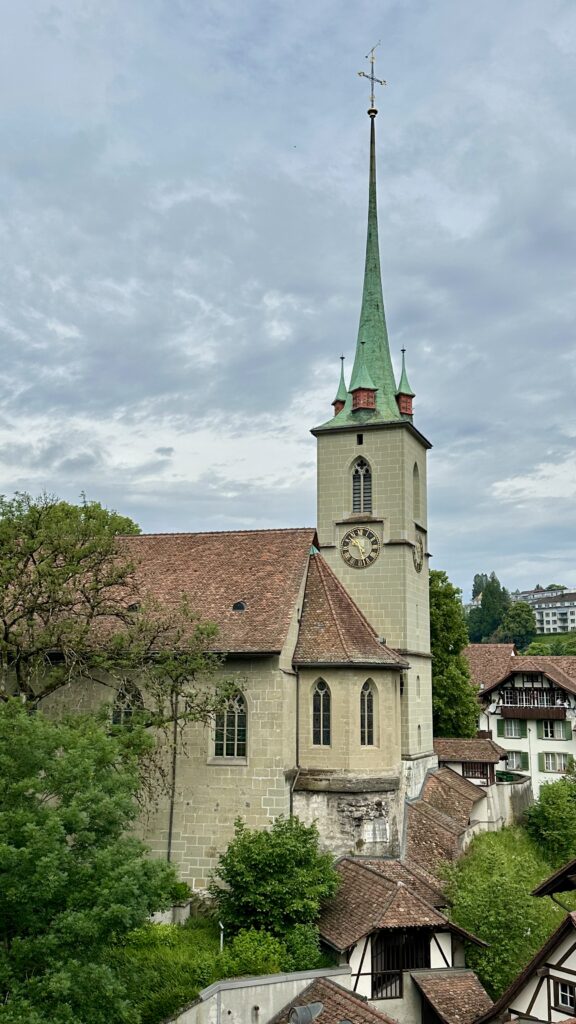
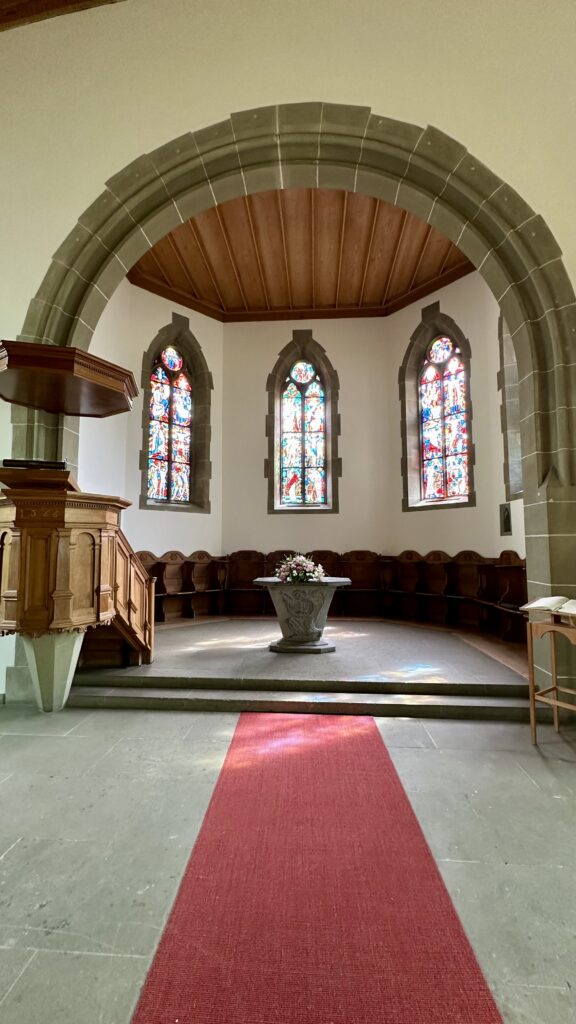
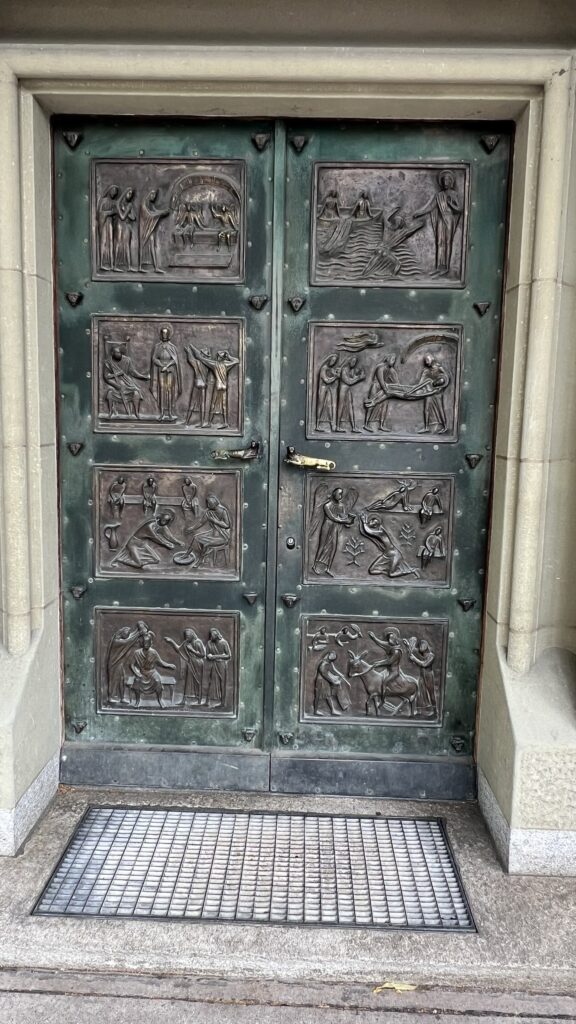
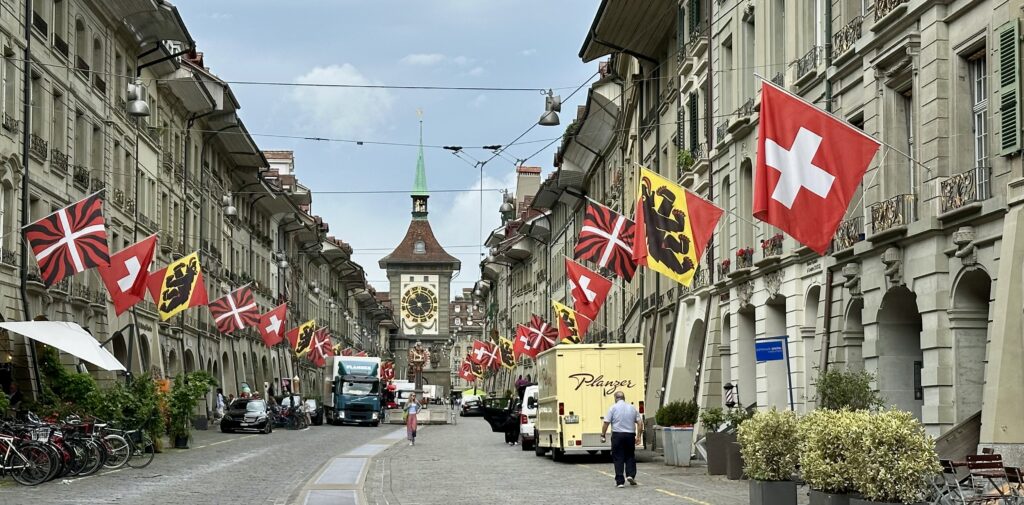
Clock Tower – The 800-year-old Clock Tower (Zytglogge) is one of Bern’s most famous landmarks. Dating back to 1530, this 23m tower is decorated with a huge astronomical clock. Beginning at 3 minutes before every hour, a circus of mechanical creatures (The Fool, The Knight, The Rooster, The Piper, and more) come out to put on a little show.
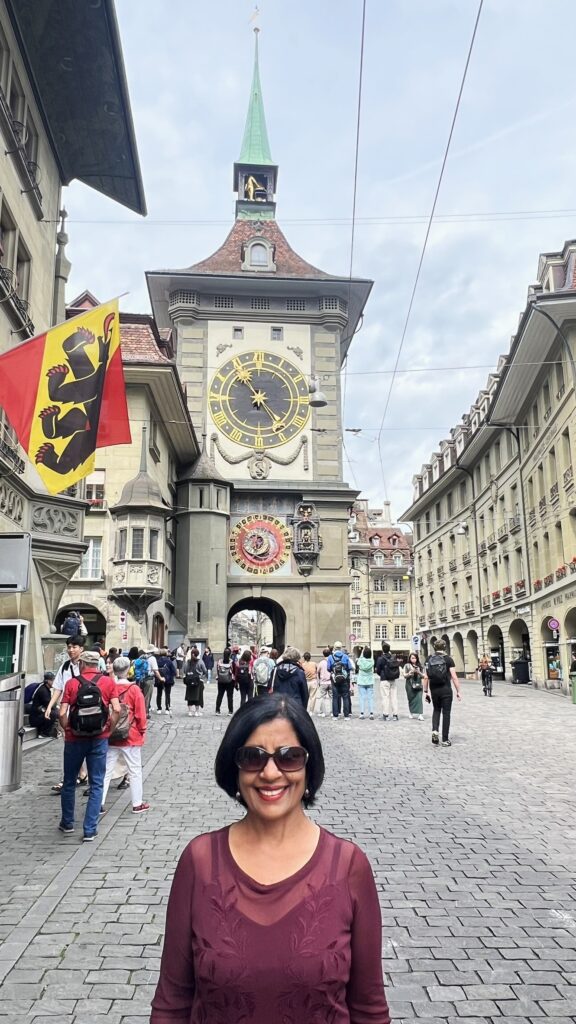

Public access to the tower (130 steps to the top) is available only through guided tours which provides insights into the history of the tower and its intricate clockwork mechanism, as well as access to the viewing platform at the top. The viewing platform of the monument provides a wonderful view of Bern old city.
Einstein Haus tour – Einstein’s former residence which is now a museum, will give you some insight into the life of the genius scientist. Einstein lived at this second-floor apartment with his physicist wife Maric Mileva and their son Hans between 1903 and 1905. The museum focuses on Einstein’s time in Bern, particularly his work at the Swiss patent office and the development of his theories.
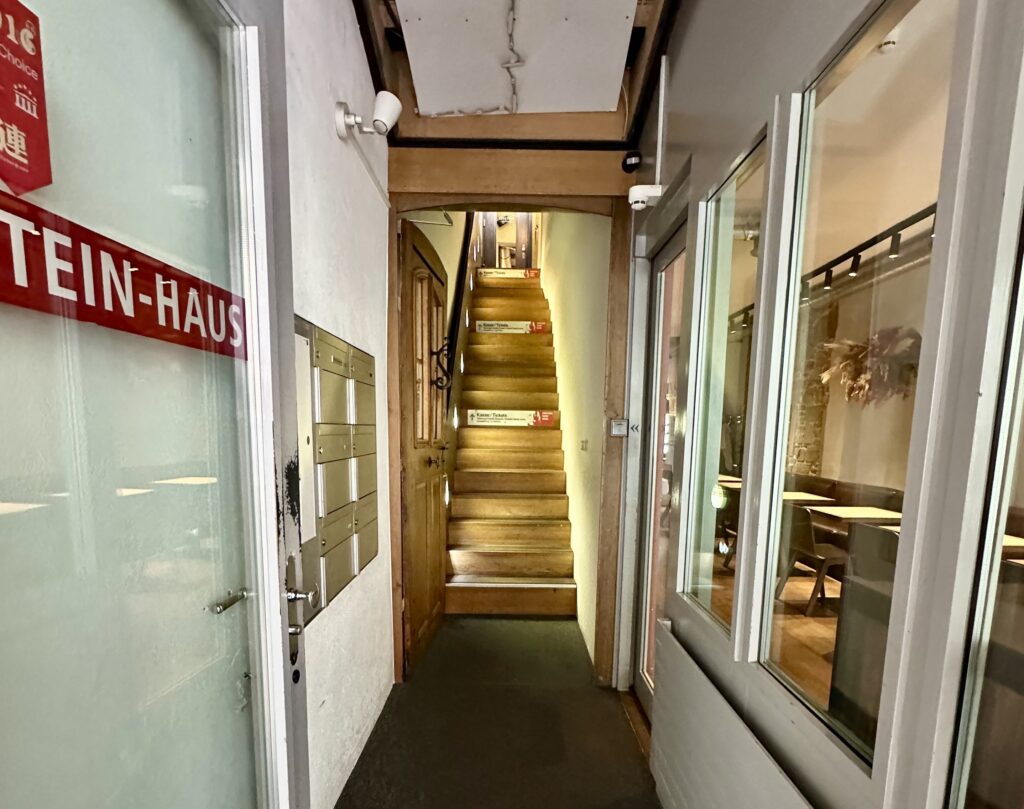
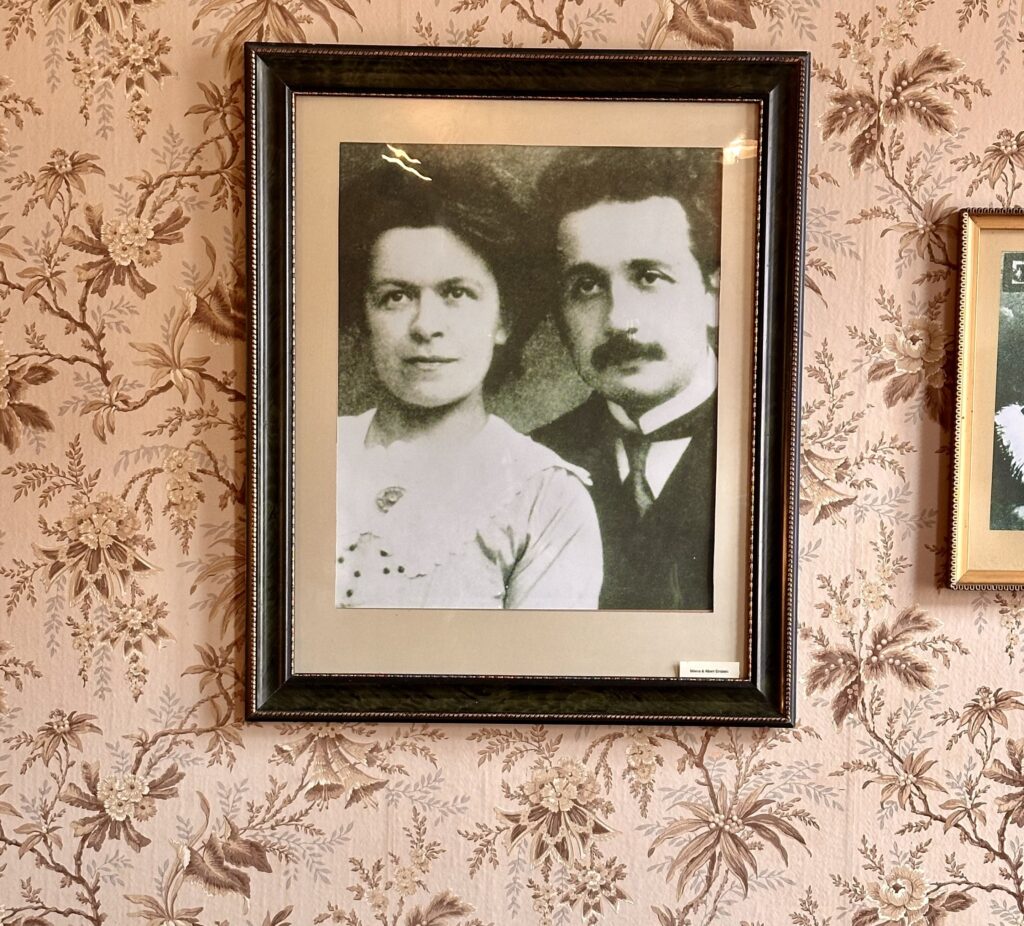
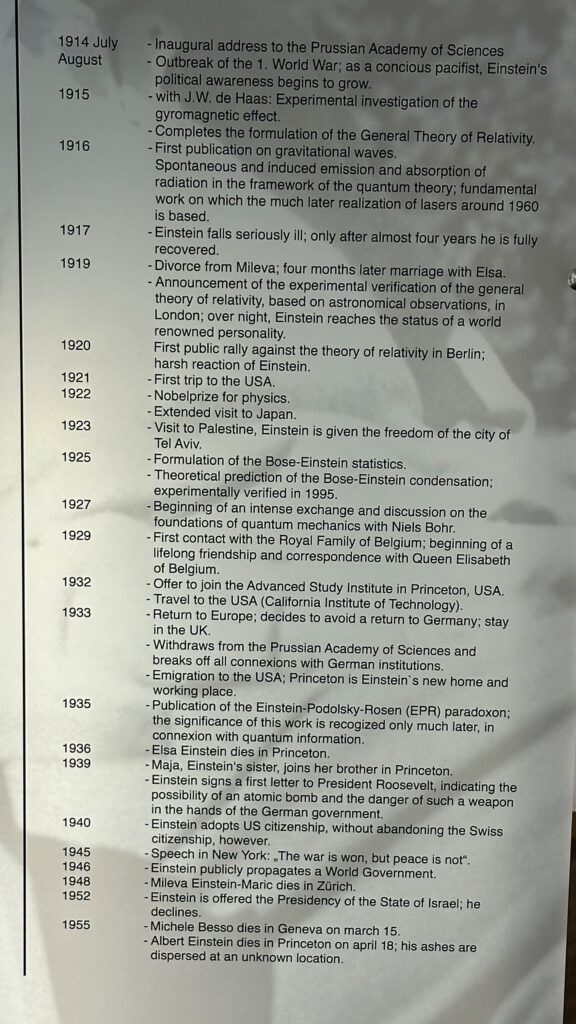
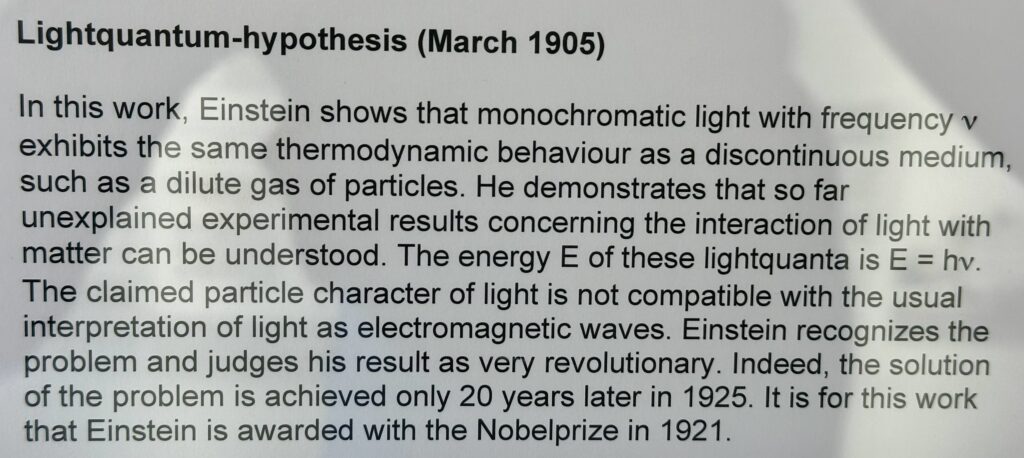

Berner Münster – also known as the Bern Cathedral, this is a Swiss Reformed Cathedral built between 1421-1893. Its tower, with a height of 100.6 m (330 ft), was only completed in 1893. It is the tallest and largest church from the late Middle Ages, and played an important role in the overall development of the city’s architecture.
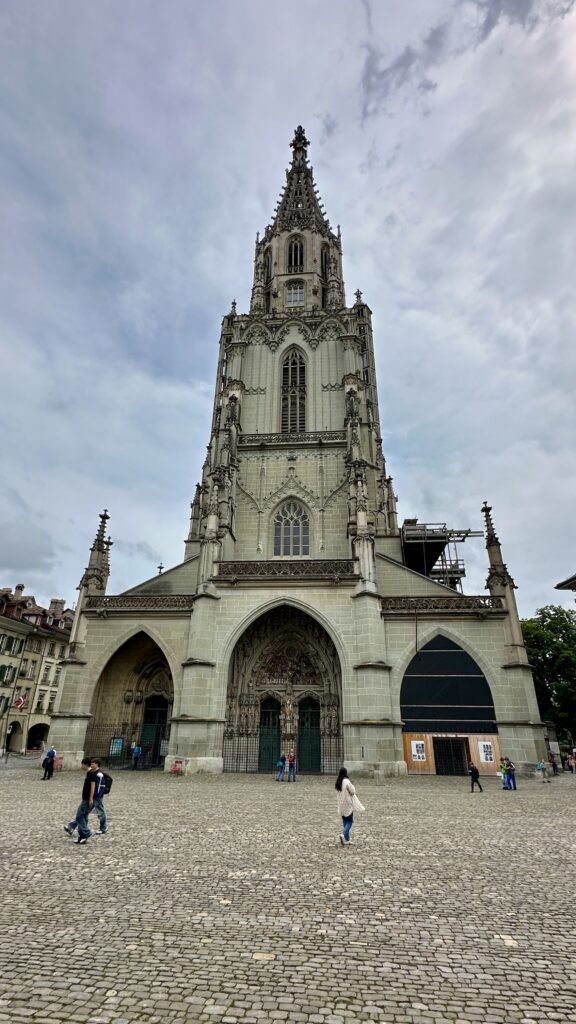
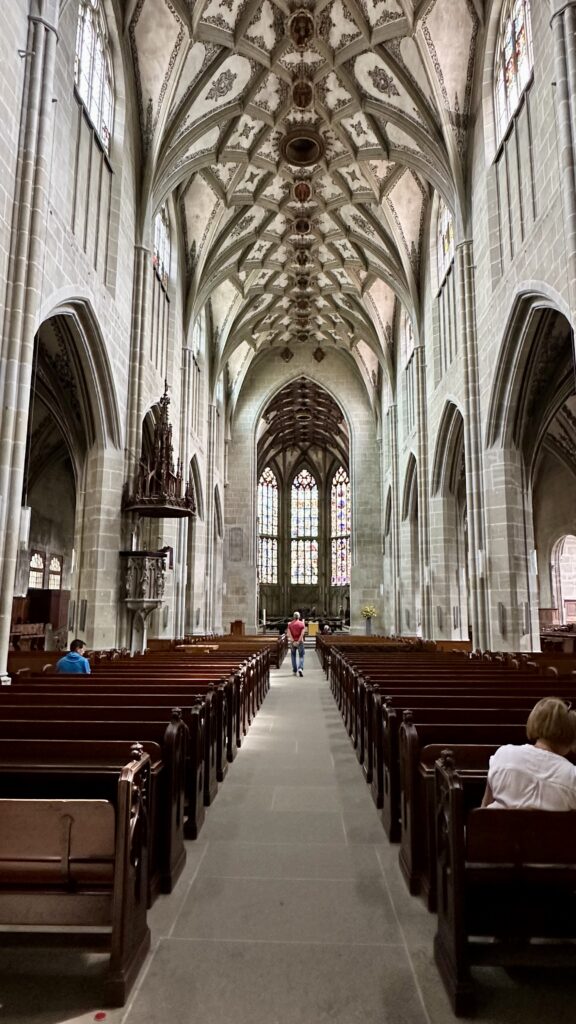
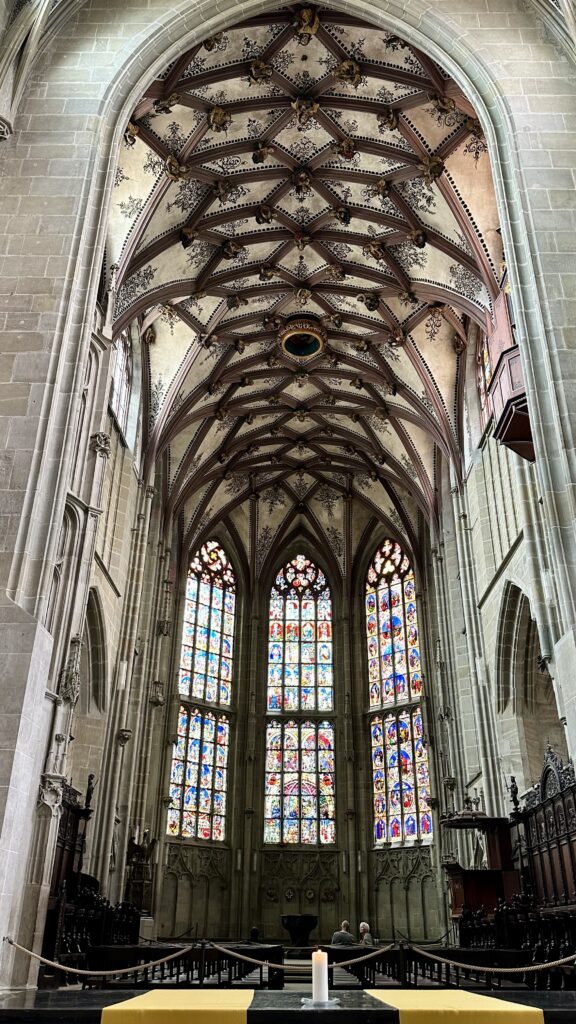
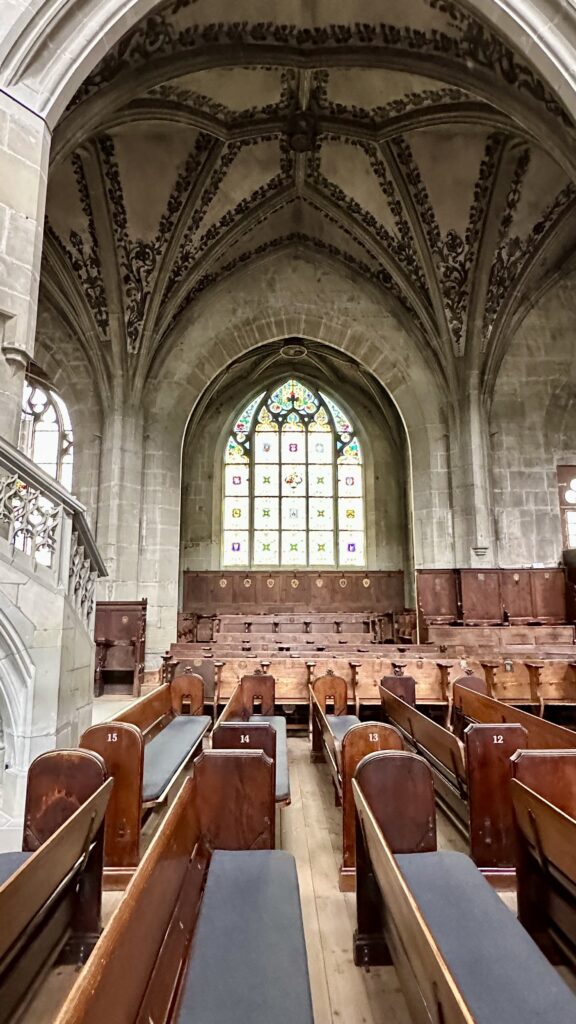
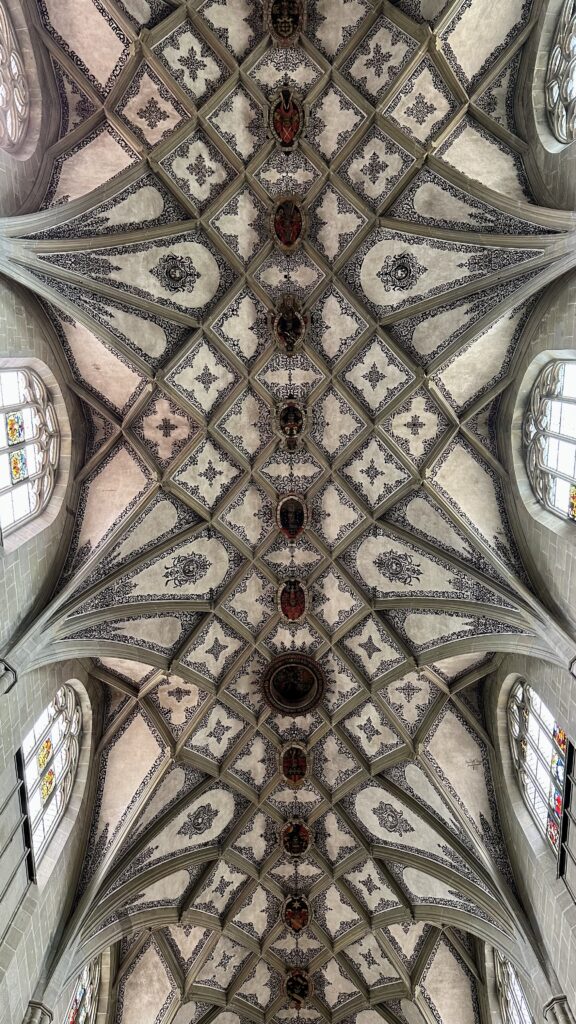
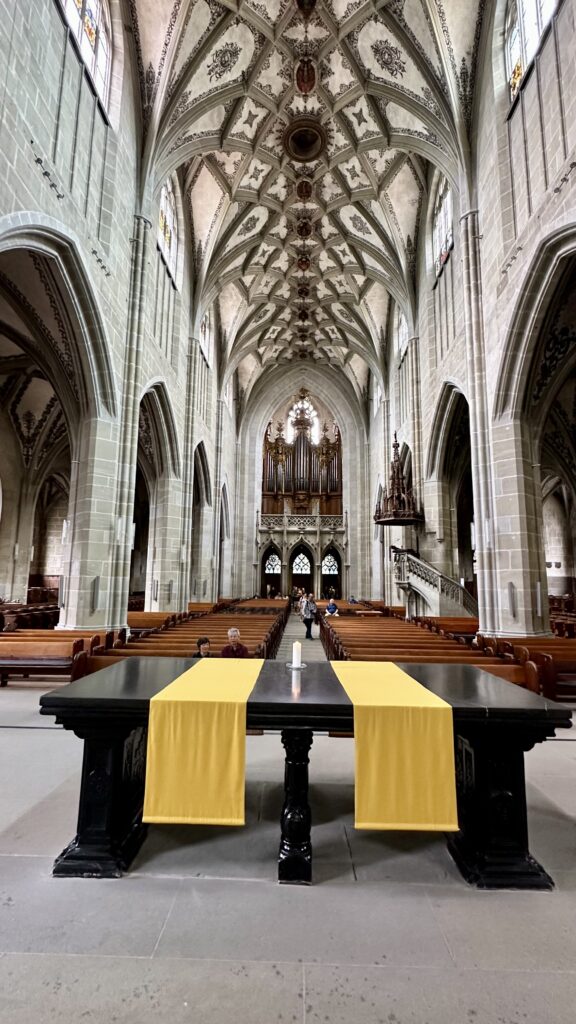
6 CHF to climb up the 344 steps to reach the viewing deck, which offers a breathtaking view of Bern city and the Aare river.
Medieval Fountains – Scattered about the old town are a number of ancient public fountains. Installed in the 16th century, the fountains were topped with statues of ideas or biblical scenes such as Samson killing a lion. Others still sport statues praising the power of Bern, such as the Zähringerbrunnen (a bear in full armor) and the Läuferbrunnen (the Runner Fountain). These fountains replaced wooden ones at a time when the city was rapidly gaining wealth. There are about a 100 fountains. Eleven retain the original statues and all are carefully maintained and frequently repainted.
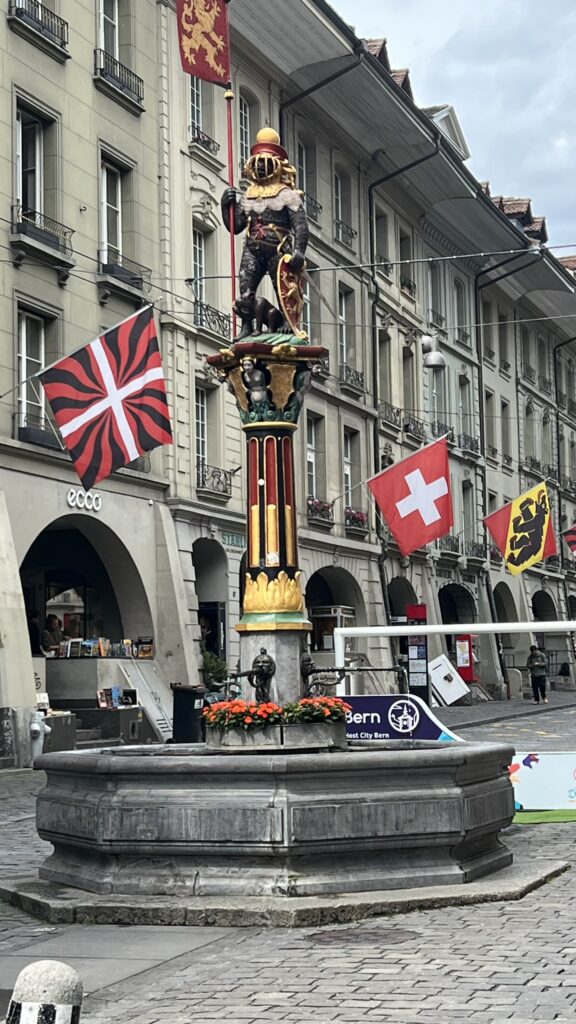
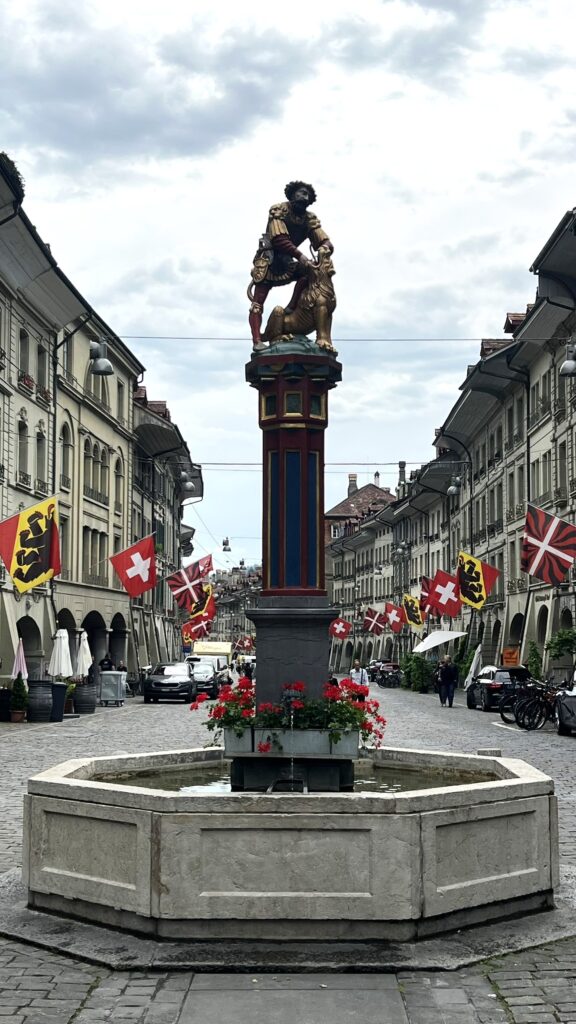
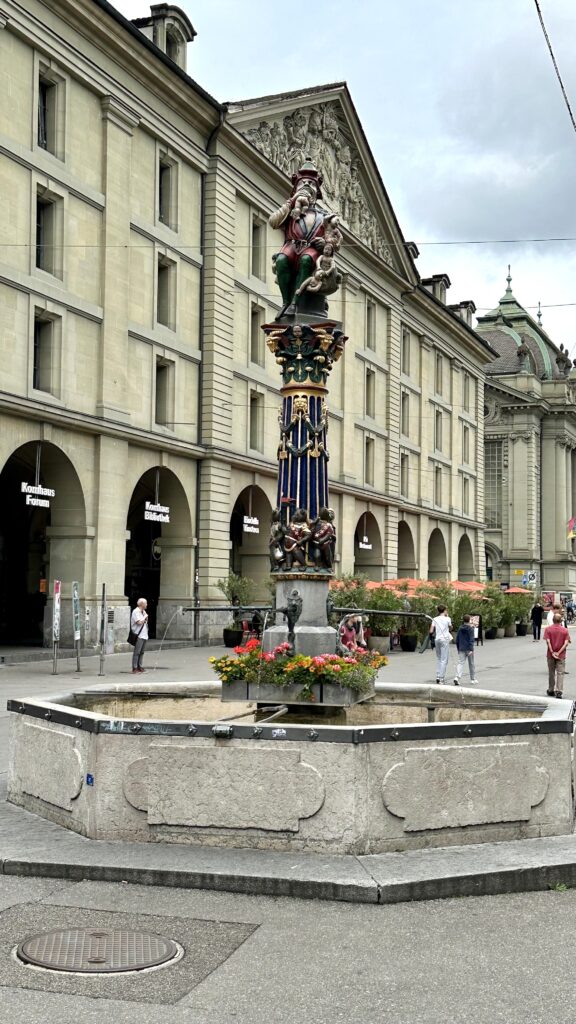
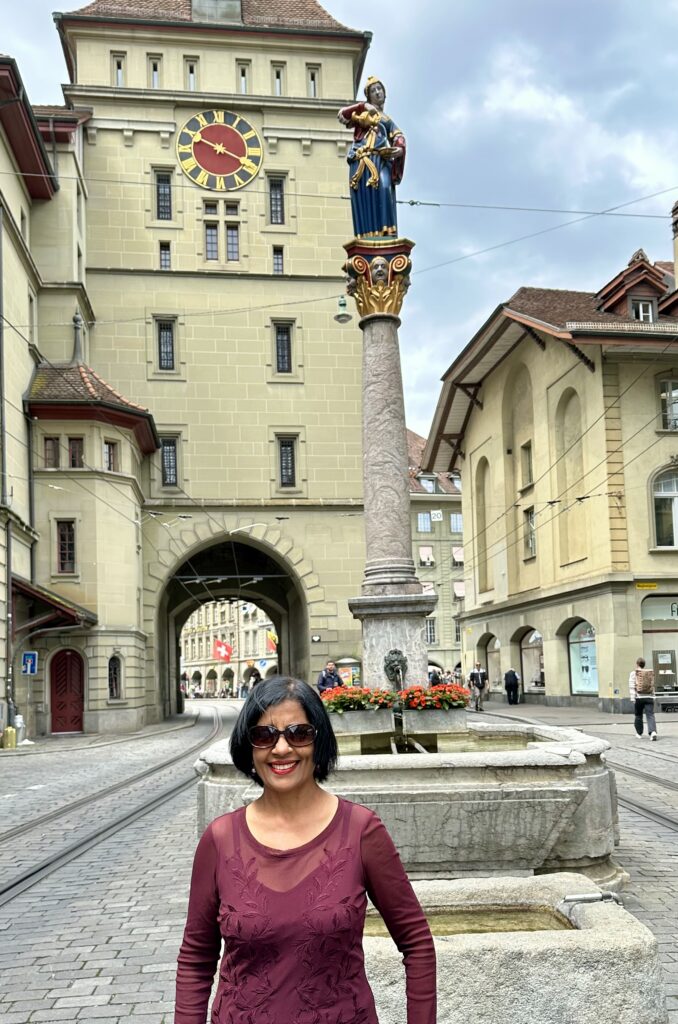
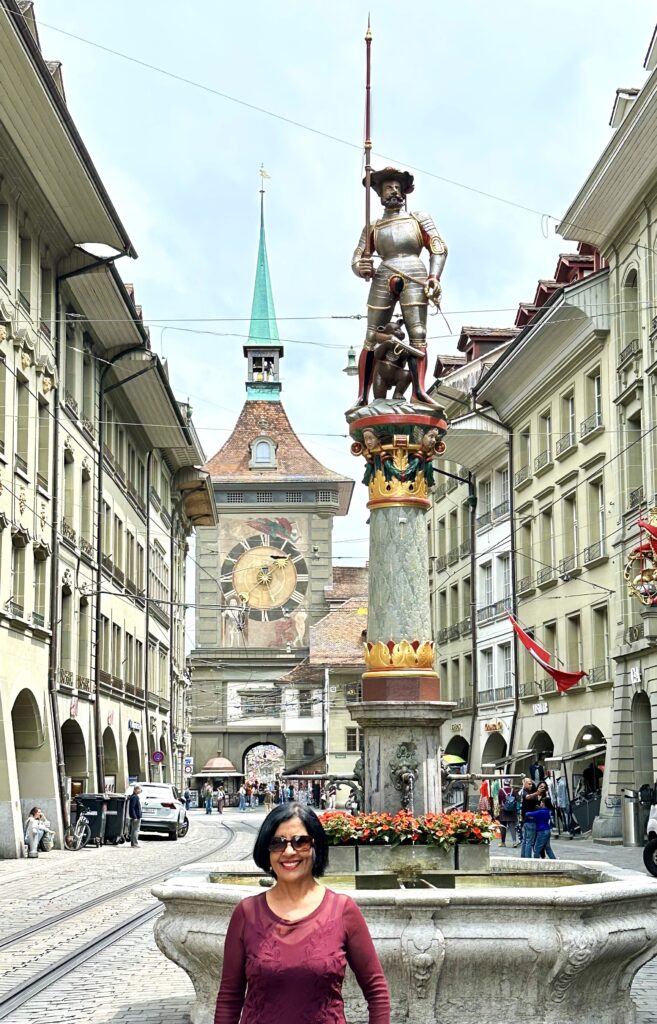
Käfigturm (Prison Tower) – In the past, Käfigturm (see picture above) was a prison, where criminals were interrogated and locked up. The original tower was built as a gate house during the second expansion of Bern in 1256. The run down tower was demolished in 1640 and completely rebuilt in the same spot. The extended tower served as a prison for another two centuries. Today, the Käfigturm stands for democracy, participation and exchange. It has been the home of the country’s political forum since 1999 and hosts many exhibitions and events on various political topics.
Kellerläden (cellar shops) – Bern is famous for its unique shops located in the vaulted cellars beneath the arcades of the Old Town. These shops, often referred to as cellar shops, have a door at street level that leads down into what were historically used as storage spaces, now transformed into retail establishments. You can find various types of shops in these underground spaces, offering a unique shopping experience.
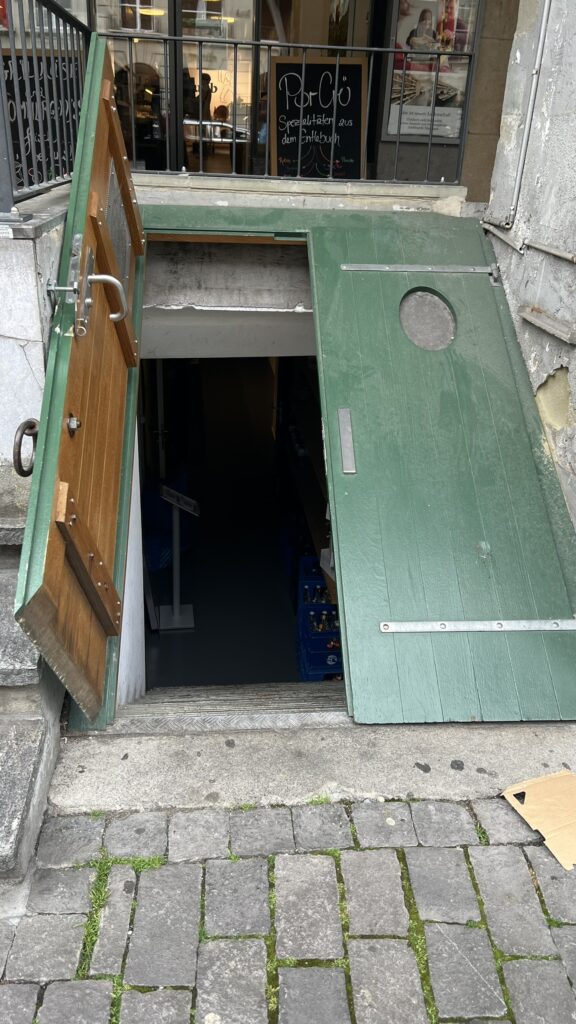
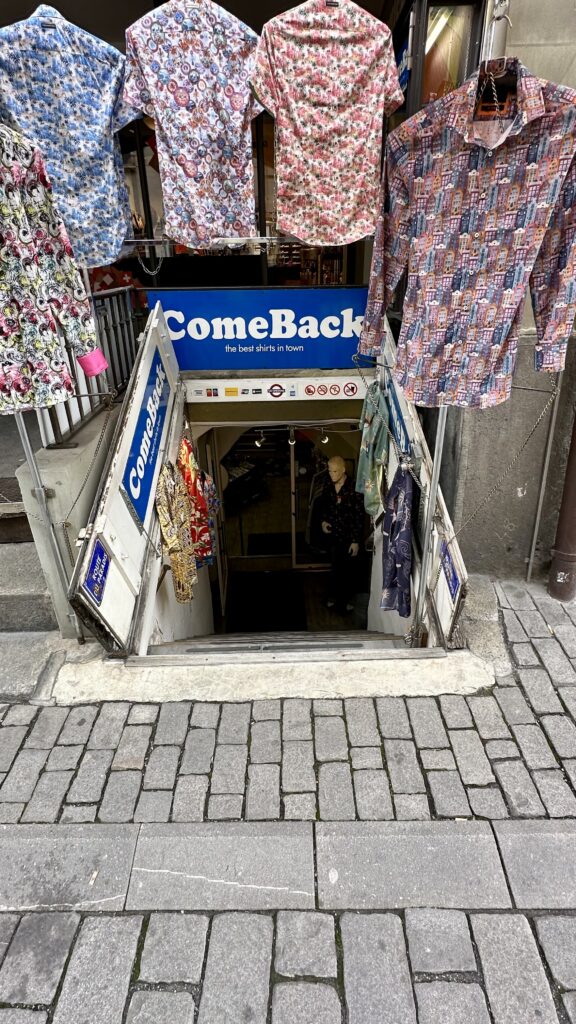
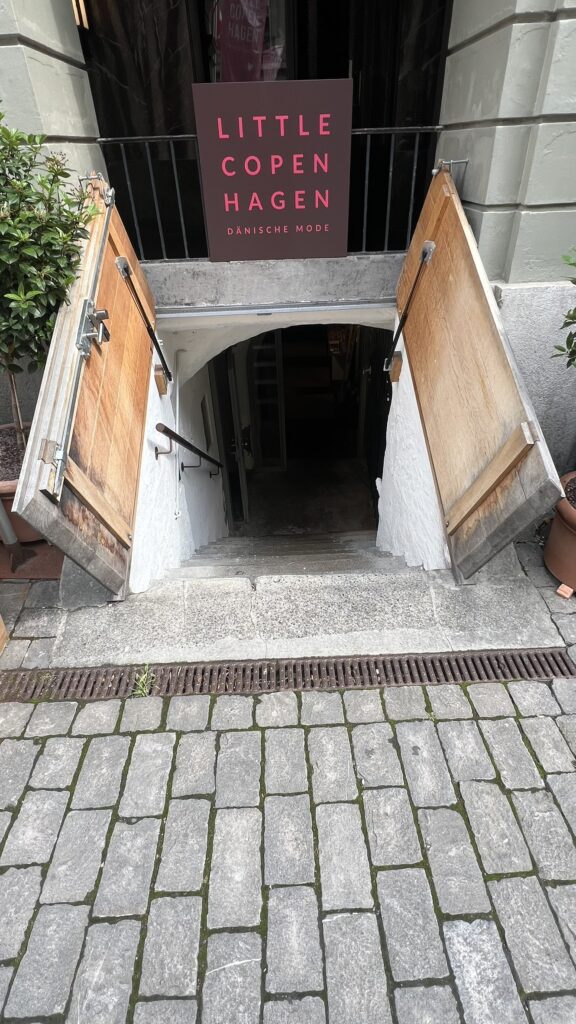
Kornhausplatz – After watching the Zytglogge clock show, we continued onwards and reached the plaza in the old city center – Kornhausplatz. This place was originally the ditch around the first city wall. In 1405 the ditch was filled in to form a plaza. For about three centuries, it was known as Platz or Plaza. In 1711-1715 the Kornhaus (granary) was built on the western side of the Platz. Following construction of the Kornhaus, the Platz was known as Kornhausplatz. Today, the Kornhaus building is a prominent cultural venue, hosting a wide range of events, including art exhibitions, lectures, and workshops.
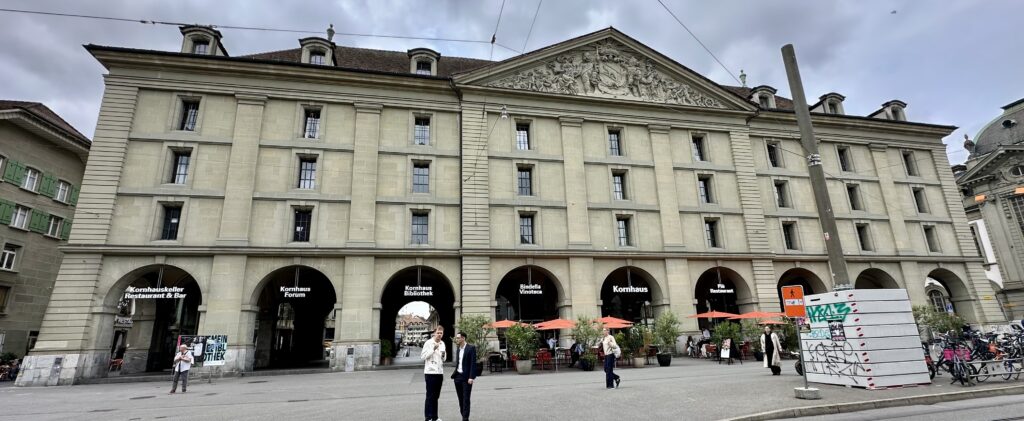
Stadttheater Bern – or the Bern Theatre, is the main opera house and theatre in the city. This theater is next to Kornhausplatz. The theatre works in four areas – Bern Symphony Orchestra, Opera, Theater, and Dance. The theatre opened in 1903 and was modernized between 2015–2016, including significant structural changes.
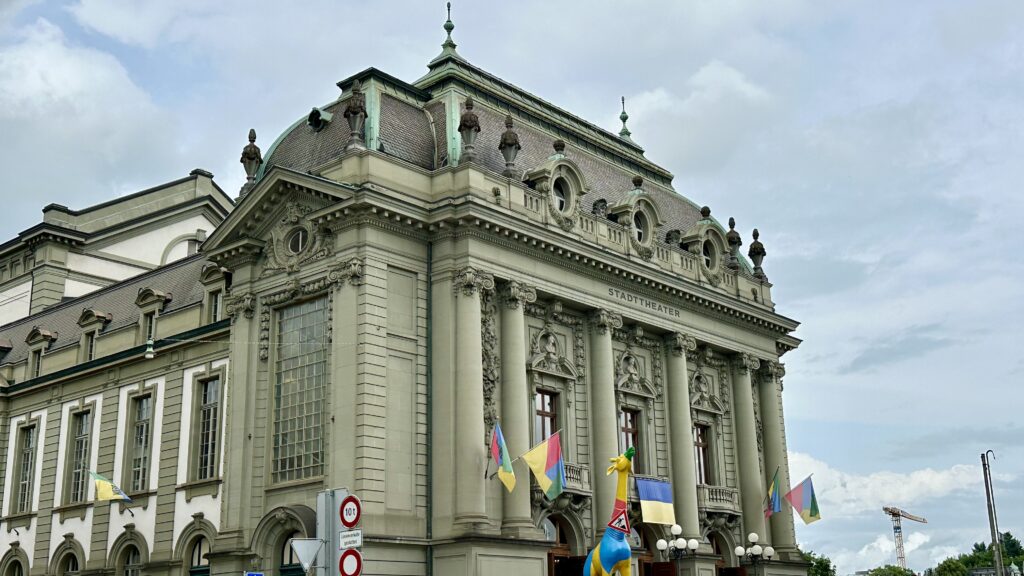
The French Church – This is the oldest church in Bern, built in 1269. In the early 17th century Bern offered asylum to the French refugees, bequeathing them use of the French Church. The Huguenots used the church for both worship and lodging. The French Church remains in use today as a French-speaking Protestant church. The interior of the French Church shows signs of its former affiliation with Catholicism. The building’s unusual design includes a central nave without transept.
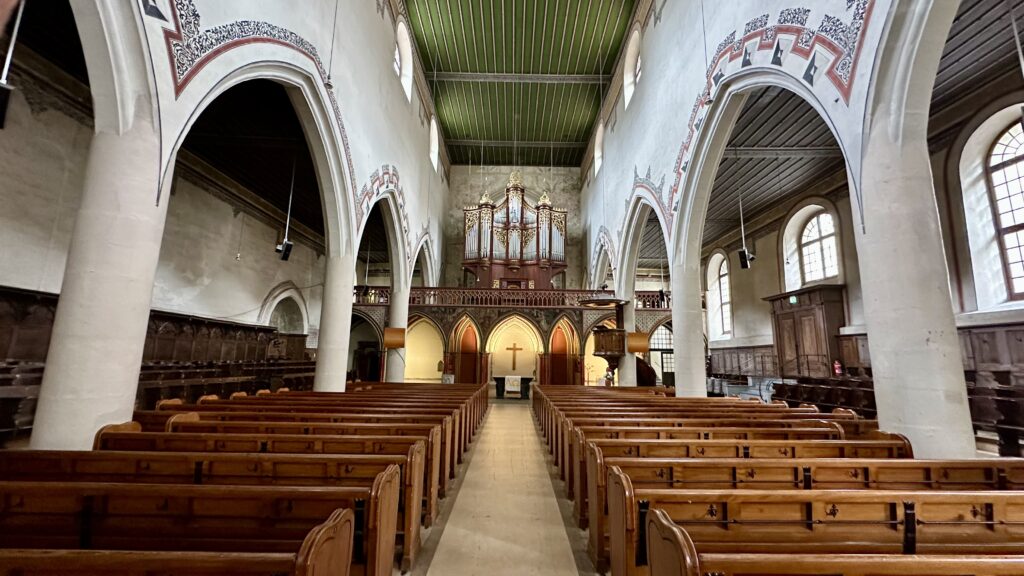
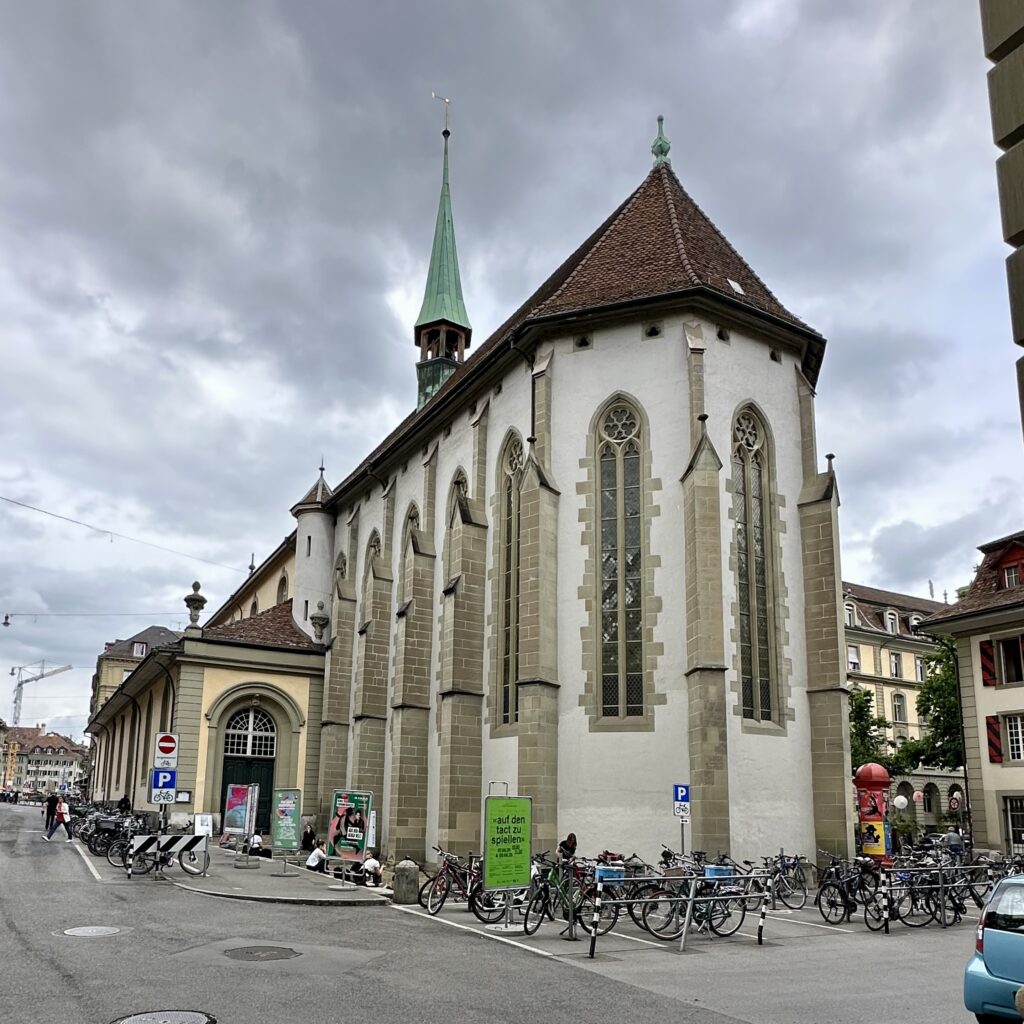
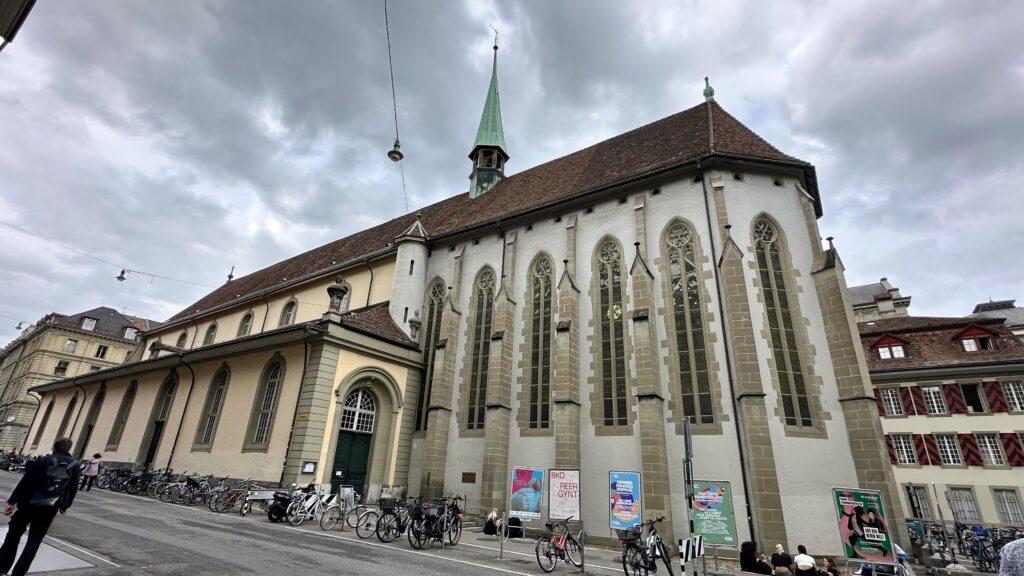
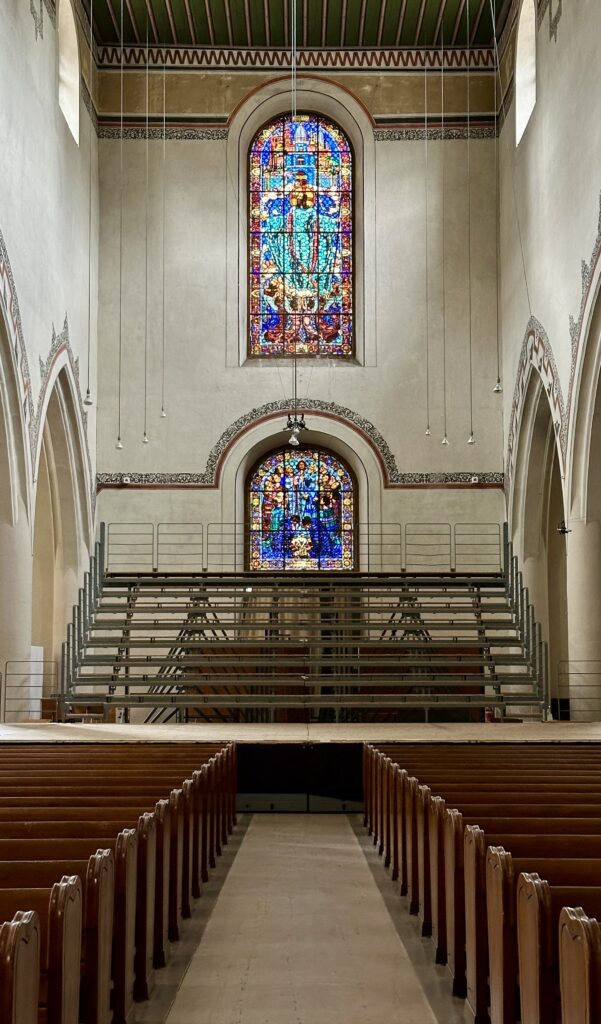
Bundeshaus – is a German term that translates to “Federal House’. It most commonly refers to the Swiss Parliament building in Bern, which houses the Swiss Federal Assembly and the Federal Council. Bern was chosen as the Federal Capital of Switzerland in 1848 and the Parliament was built in 1902. In the central hall, under the cupola between the two assembly rooms, there are numerous symbolic depictions of Swiss history. After undergoing extensive renovations, the seat of Swiss government has been gleaming with new resplendence since May 2008. Guided tours are available. We only checked the building from outside.
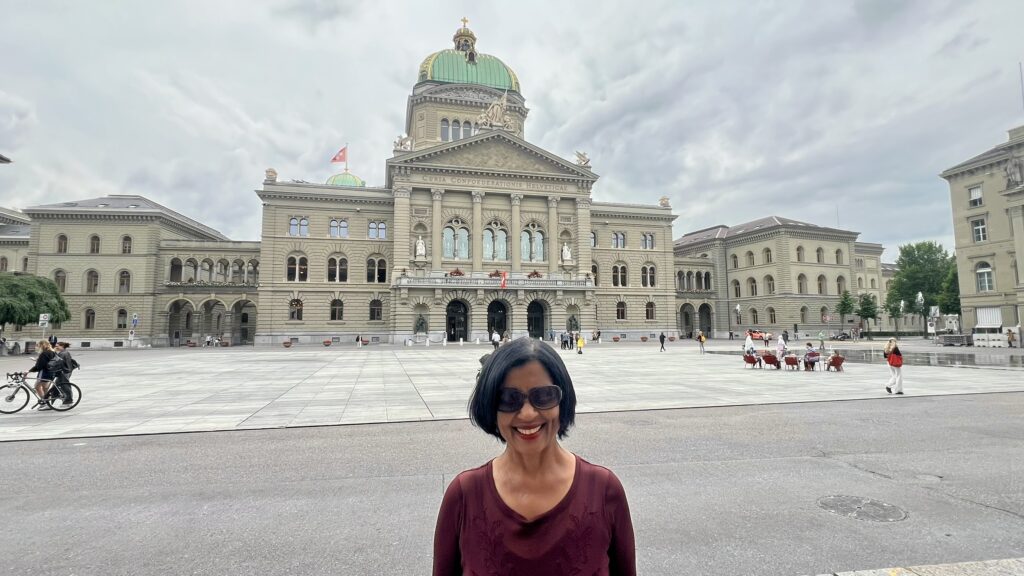
The Parliament building is located in Bundesplaz (Federal) square, which has other impressive buildings like the Swiss National Bank, and the Berner Kantonalbank.
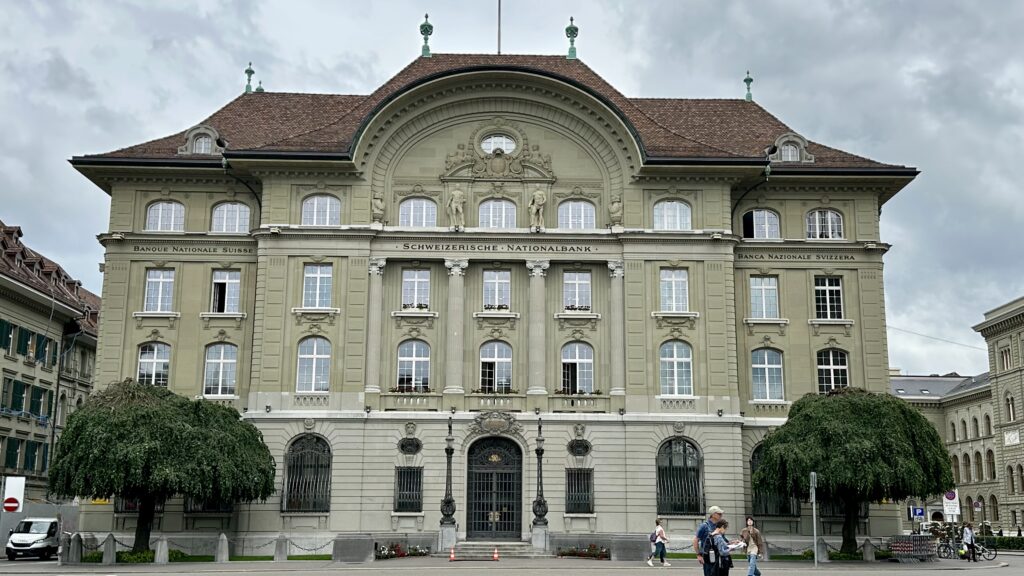
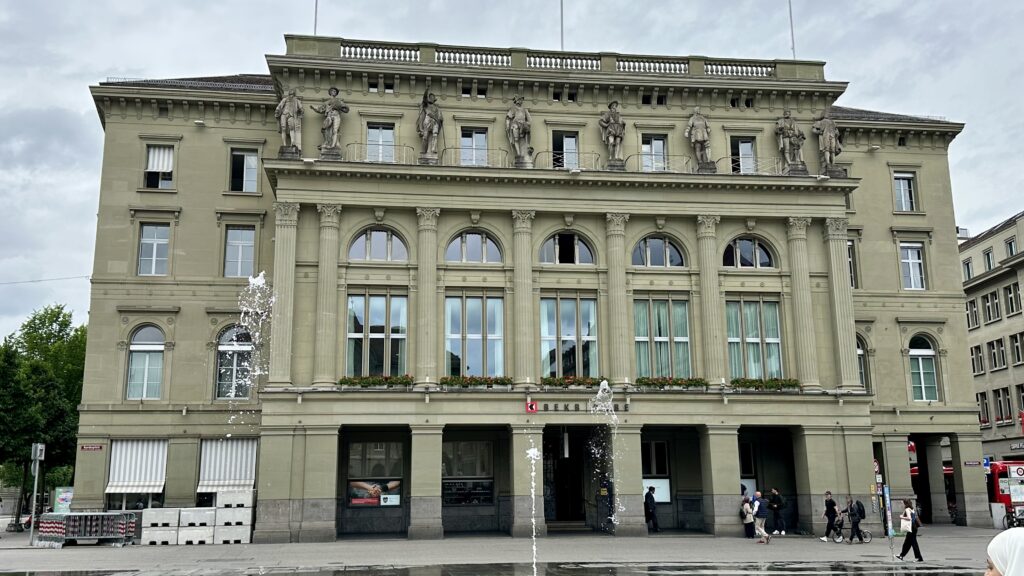
Aare River – Flowing through the city, the Aare River provides a picturesque backdrop and selfie opportunities from many locations.
